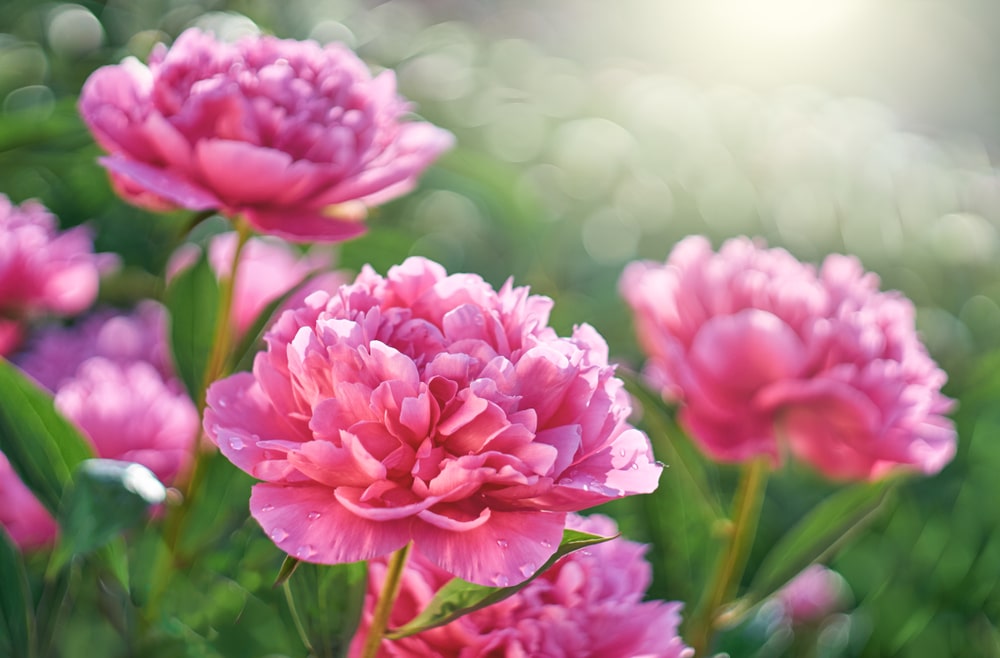In the spring, I sit on my deck and admire the peonies in the back of my yard. In the morning I watch the occasional bunny hop around, but they leave the peonies alone. So do the deer! And the fragrance of the peonies is wonderful. I appreciate the beauty that they have brought to my yard for more than 2 decades!
They’re beautiful, tough and durable, and well-loved. Here are some interesting tidbits about these amazing perennials.
Ten Fun Peony Facts
- The peony is named after Paeon, a student of Asclepias, the Greek god of healing. Legend says that when Asclepias became jealous of his gifted student, Zeus saved Paeon from his jealous master by turning him into a beautiful flower.
- Peonies are native to Asia, southern Europe, and western North America.
- In China, the name for Peony is “Sho Yu,” meaning “Most Beautiful.”
- Peonies can live past 100 years and come in every color except blue and can grow as large as 10-inches!
- Peonies love cold winters and will even thrive as far north as Alaska.
- Peonies are the State Flower of Indiana.
- Partially cooked and sweetened petals of peony flowers are served as desserts in China.
- When Marco Polo first saw peonies, he called them “Roses, as big as cabbages.”
- Peonies represent honor, prosperity, and good fortune.
- Ants love peony flowers. They eat the nectar the buds produce. Garden lore says ants eat the waxy coating on the buds so the flowers will open, but this is a myth. The buds will open with or without help from the ants. However, to protect their nectar sources, the ants can fight off other insects that might damage the buds, so leave them alone.
How to Plant Your Own Peonies
To plant peony roots, dig a hole about two feet in diameter and work in a little compost—our grower does not recommend manures at this stage. Plant roots with the eyes covered only one to two inches deep. If you plant too deep, the plant will come up but will not bloom well, if at all. Try to plant peonies in a spot where they can live for years, because they resent being transplanted or moved.
Feed peonies with a lower-nitrogen fertilizer (I use Bulb-tone) when the foliage begins to unfurl in the spring. Feed again, lightly, in late summer. Never remove peony foliage until it dies back on its own. It needs a chance to send all its energy to the roots for next year’s flowers. To prevent any problems, keep the base of the peony plant free from debris. Remove the leaves in the fall as soon as they die back, leaving a three inch stem. Avoid overhead watering, if possible.
They’re Here!
Our locally grown freshly dug peony roots have just arrived. Come in and get your “roses as big as cabbages.”

